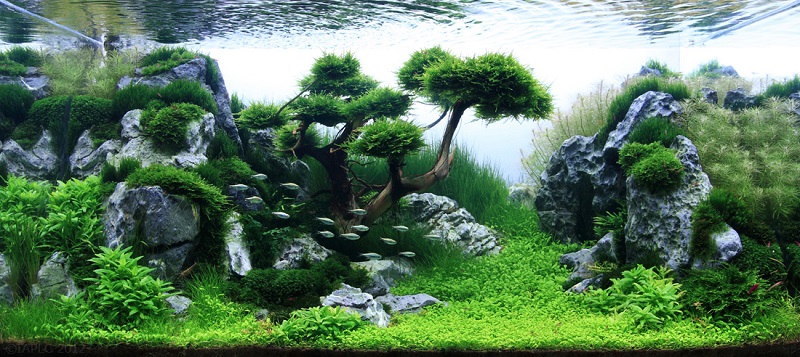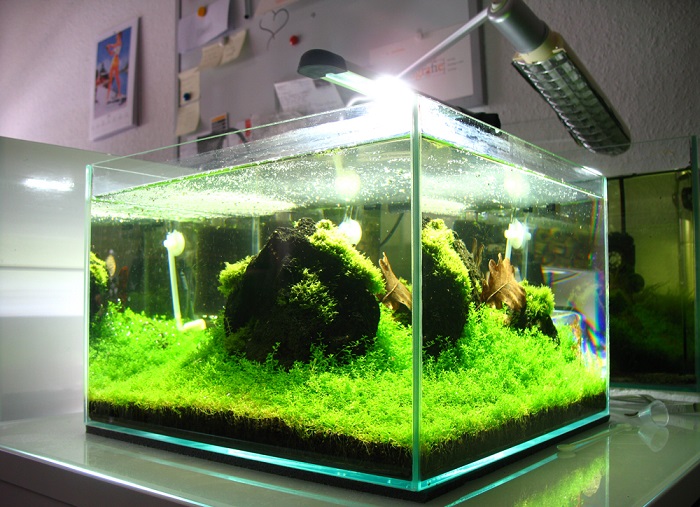-

-
Fish Care Advice
Setting up your Aquarium
This is a step by step guide to setting up an aquarium and by following these simple instructions you can create an ideal habitat for your new fish.
  
Choosing your fish
There are plenty of tropical and coldwater fish to choose from but it is important that you make informed choices; some fish are not very sociable and will fight, whilst others prefer to live in shoals of their own kind and should not be kept in isolation. When buying your first fish be sure to ask the store team what they would recommend for a new aquarium to ensure you choose the most suitable fish and plan the best community.
|
| All About Your Pet
|
Choosing Your Pet
|
Home & Equipment
|
Feeding
|
Taming & Handling
|
Exercise & Play
|
Cleaning
|
Health
|
Did You Know?
|
Taking them home
When you buy fish, pack them carefully for the journey to their new home, firstly in a plastic bag and then a brown paper bag as keeping them in the dark reduces stress whilst being transported. They should not be kept in the bag for longer than 1-2 hours. When transporting your fish, take care not to allow them to get too hot or too cold as this can also cause stress. When you get them home, turn off your aquarium light and float the bag in your tank for about twenty minutes, allowing the water temperature to equalize, then add some of your aquarium water to the bag and wait a further 10 minutes before transferring the fish into the aquarium with a net. Throw the old water away and do not mix it with the water in your tank.
The fish may be nervous and hide for a period of time, so leave the aquarium light off and let them settle down for a few hours before feeding them.
We strongly recommend that any tank over 30L requires the matching/applicable stand. You may find some manufacturers’ warranties are only valid if your tank is displayed with the appropriate stand.
Maintaining a healthy aquarium
Maintaining the water quality is the most important factor in keeping fish healthy. Regular water changes are vital for keeping your fish healthy.
New fish are more susceptible to disease, due to the stress of being moved. New fish should therefore be observed very carefully for several days after they are introduced. It is vital for your fish that you maintain a healthy aquatic environment and although many water problems are not visible to the naked eye, the effects on your fish often are. If you observe any changes in behaviour or unusual spots or markings on your fish, they may have contracted an illness and will require treatment to recover. Treatment may range from a substantial water change to a chemical treatment, but many diseases, if addressed early, are curable.
Firstly, you need to consider where to put your tank, as once it is full of water it will be very difficult to move. Your aquarium should be positioned near a mains power supply, away from draughts and direct sunlight to avoid the growth of algae, and out of reach of small children or pets. We recommend you use a specially made aquarium stand or cabinet to hold the tank level or hairline cracks may occur. Use aquarium foam or polystyrene pads to cushion the tank if it does not have raised glass on the bottom and place your tank away from electrical equipment.
Secondly, you need to ensure you have the correct equipment. Use this checklist to make sure you are fully prepared:
Filter
Internal, external.
Heater
Essential if you want to keep tropical fish.
Air Pump
Good for both oxygenation and running air lines or ornaments.
Lighting
Important for creating a natural day and night environment for your fish and essential for live plants.
Gravel
Provides a natural environment for your fish and a good rooting base for live plants.
Plants
Live or artificial, they help to create a natural environment for your fish. Live plants also provide an important alternative food source for many types of fish.
Ornaments
Aside from simple decoration, ornaments provide hiding places and shelter for fish.
Water Conditioner
An essential item when setting up a tank. Tap water is treated with chemicals which make it safe for us to drink but toxic to fish. A water conditioner or de-chlorinator removes the harmful chemicals.
Water test Kit
Essential for you to monitor the chemical levels in your water before and after adding fish.
Filter boost
Promotes the growth of beneficial bacteria in your filter.
Installation
Once you have all the necessary equipment you can set up your aquarium following these basic steps:
1. Wash out your new tank and place it in its intended position. Make sure there are no cracks or damage to the tank.
2. Wash the gravel in cool, clean water. Do not use soap or detergents.
3. Cover the bottom of the tank with gravel to a depth of 5cm at the rear sloping to 3cm at the front. This ensures any waste will accumulate at the front where it can be easily removed.
4. Fit your heating, lighting, aeration and filtration equipment following the manufacturer’s instructions carefully. Do not plug the equipment in yet.
5. Half fill your tank with cold water without disturbing the gravel bed. One method is to lay a piece of polythene, or plastic bag, on the gravel and place a bowl on top. Pour the water into the bowl so that it flows over the side onto the polythene.
6. Wash your plants and decorations thoroughly in clean water and then place them in the tank. Arrange your taller plants at the rear of the tank with the smaller ones at the front to create more depth.
7. Fill the tank to within 2-3cm of the top and add the water conditioner.
8. Plug in and switch on the air pump and filter. Wait 20-30 minutes then switch on the heater.
9. It is important to wait for at least 3 days with all systems running before adding any fish. Initially the water may appear a little cloudy but it will clear.
Water Quality
pH measures the water’s acidity/alkalinity. The pH scale runs from 0 (very acidic) to 14 (very alkaline) and pH7 is an ideal level for the majority of fish. Some fish do prefer different pH levels so make sure you check before you buy.
A temperature of 24-26 degrees is standard for a tropical aquarium and is regulated by a thermostat in the heater. A thermometer should be visible in the tank to ensure the temperature does not fluctuate. Ammonia and nitrite levels should be regulated and although they both occur naturally from fish waste, bacteria living inside your filter convert these dangerous chemicals into nitrate which is less harmful. Regular water changes should keep these levels close to zero. However, bacteria takes time to build up and new tanks are particularly susceptible to high levels of dangerous chemicals. A filter boost can be added to promote the growth of bacteria and speed up this process.
To maintain ideal water conditions and prevent the build up of dangerous chemicals in new aquariums, perform water changes at least once a week by removing 20% of the tank’s volume and replacing it with clean (dechlorinated) water. You can reduce the frequency of water changes to once fortnightly when the chemical levels seem to have settled. You will need to rinse the filter media on a regular basis to remove any large sediment and clear the impellor inside the filter from sludge, but in both cases you must ensure you rinse with water from your tank and not from the tap.
Introducing fish
It is important to introduce fish gradually over a number of weeks and not to overstock your aquarium. Your filter will need time to adjust to the increase of ammonia in the water - if stocked too quickly the filter will not be able to control the levels of waste produced and the water will quickly become toxic, so only add a few fish at a time. It can be beneficial over this period to use an ammonia remover. Maintain regular water changes throughout the stocking period to keep control of rising ammonia levels.
We use general guidelines to determine how many fish are suitable for any one aquarium. Tanks are different shapes and sizes, so there is no exact rule, but we use the following ‘size versus volume’ rule as a guide:
Coldwater fish: 0.5cm of fish per litre of water
Tropical fish: 1cm of fish per litre of water
Remember that this is a guide to maximum stocking levels, based on the size of fully grown fish. Always account for growth when buying your fish.
Feeding your fish
There are a number of fish foods available in flake or pellet form which provide a perfectly balanced diet with all the nutrients your fish require to stay healthy. We also stock frozen food which is nutritious and provides essential variety in your fish’s diet.
Flaked food is suitable for all kinds of fish, although there are many types of specialist foods appropriate for fish that feed in different ways:
- Surface feeders will readily take flakes and floating pellets.
- Mid water feeders like granular or slow sinking foods.
- Bottom feeders should be offered quick sinking foods or tablets.
Feed your fish once a day, offering just enough food so that it is eaten within 2 minutes. Start with a small amount and adjust accordingly. Over-feeding will pollute the water, so ensure any excess food is removed from the tank after feeding.
Maintaining your Marine Aquarium
When maintaining your aquarium, little and often is the best practice. Your maintenance schedule will depend on the type of aquarium you have and also what species of fish and corals you have living in it, but as a general rule you should aim for the following:
Daily
- Check pumps and filters are working correctly.
- Feed twice a day as a minimum with dried and frozen food.
- Check the salt level and adjust as needed.
Weekly
- Clean algae from the glass.
- Gently rake the sand over.
- Test the water for pH, Ammonia, Nitrite and Nitrate.
- You may also need to perform other water tests depending on the type of aquarium you have, such as Calcium levels in a living coral aquarium.
- Empty and clean protein skimmer collection cups.
Fortnightly
- Carry out a water change of between 10% and 30% of the tank’s volume.
- Clean filter media and replace chemical and carbon media as recommended by manufacturer.
Converting a Tropical Freshwater Aquarium to Marine
Many tropical freshwater aquariums can easily be converted to house marine fish and corals, and equipment such as heaters and filters can be re-used. Lighting can be upgraded to marine strength tubes and additional filters, water pumps and a protein skimmer added.
You will need the following equipment to convert to a marine aquarium:
Protein Skimmer
Essential for a marine aquarium to help create a stable environment.
Addition Water Pump(s)
Needed to re-create the strong currents found on a coral reef, one or more pumps may be needed, depending on the size of your fish tank.
Filter
Depending on which filter you already have, a second filter may be needed, with external filters recommended.
Upgraded Lighting
Marine strength light tubes or LEDs are required and are available in sizes to suit most aquariums.
Coral Sand
For the base of the aquarium.
Live Rock
To build the coral reef structure and help establish the aquarium.
Marine Test Kits
To monitor the water conditions.
Hydrometer or Refractometer
To monitor the salt levels in the water